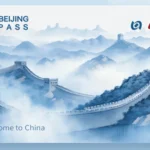Beijing, the capital city of China, is a blend of modern skyscrapers and ancient history. One of the most charming aspects of Beijing is its hutongs. These narrow lanes and traditional courtyard residences are a glimpse into the city’s rich cultural past.
For foreign tourists visiting Beijing, exploring hutongs offers an authentic experience of old Beijing. This guide will help you navigate where to see hutongs, their history, and how to enjoy them fully.
What Are Hutongs?
Hutongs are narrow alleys formed by lines of traditional courtyard residences. They date back to the Yuan Dynasty (1271-1368) and flourished during the Ming and Qing Dynasties.
Today, they represent a unique part of Beijing’s urban landscape. Walking through hutongs, you can see the traditional way of life, architecture, and experience the community spirit that has persisted for centuries.
Why Visit Hutongs?
Hutongs provide a stark contrast to the bustling city life of Beijing. They offer tranquility, a slower pace, and a chance to see the city’s history up close.
Moreover, hutongs are home to many of Beijing’s cultural treasures, including temples, tea houses, and small local shops. Visiting hutongs allows tourists to step back in time and experience a part of Beijing that remains unchanged.
Top Hutongs to Visit
1. Nanluoguxiang
Nanluoguxiang is one of the most famous hutongs in Beijing. It stretches over 800 meters and is lined with boutiques, cafes, and bars. First, this hutong offers a mix of traditional and modern elements.
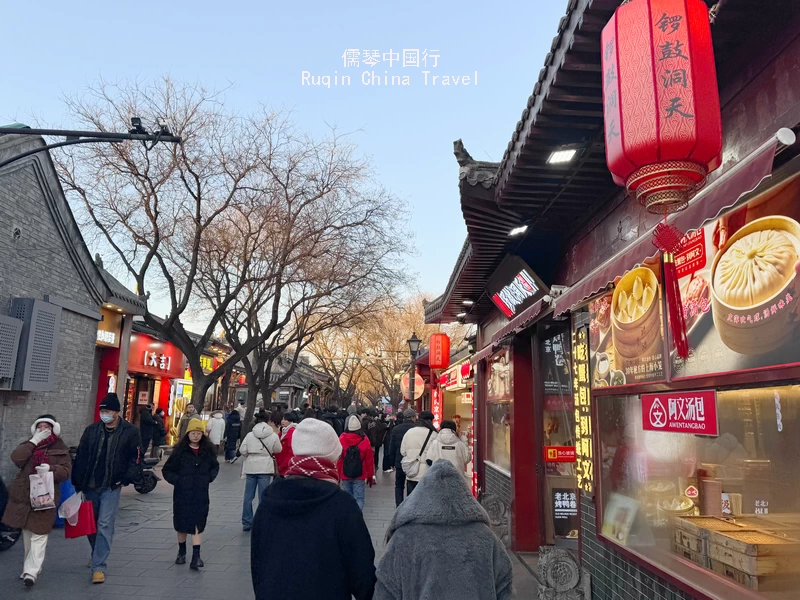
Visitors can explore small shops selling unique souvenirs, trendy fashion items, and traditional crafts. Additionally, Nanluoguxiang is known for its vibrant nightlife, making it a great place to visit both during the day and in the evening.
2. Yandai Xiejie
Located near the Shichahai area, Yandai Xiejie is another popular hutong. The name translates to “Tobacco Pipe Lane” due to its shape resembling a tobacco pipe.
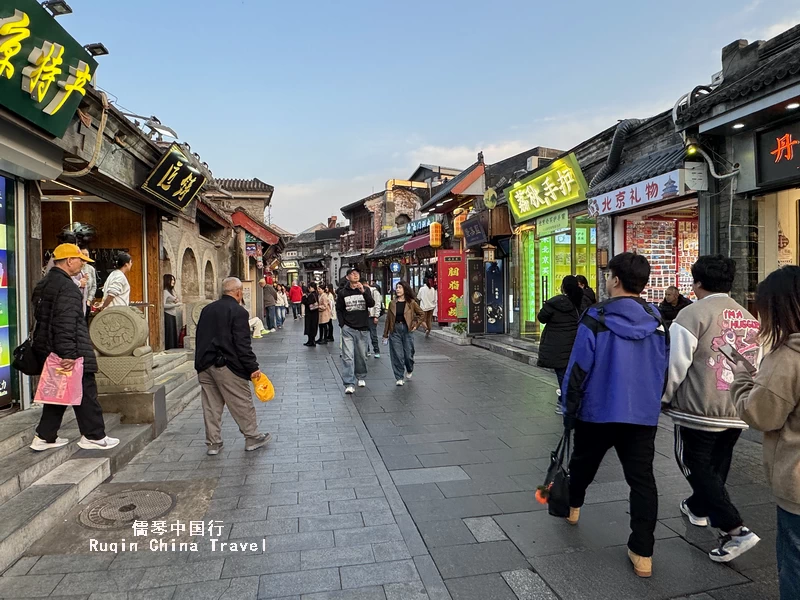
This hutong is famous for its antique shops, tea houses, and traditional snack vendors. Moreover, it’s a great place to buy traditional Chinese items like silk, jewelry, and tea. Walking through Yandai Xiejie, you can also enjoy beautiful views of the nearby lakes and historic architecture.
3. Wudaoying Hutong
Wudaoying Hutong is known for its trendy vibe and artistic atmosphere. It’s a favorite among young locals and expatriates. The hutong is filled with chic cafes, art galleries, and unique shops.
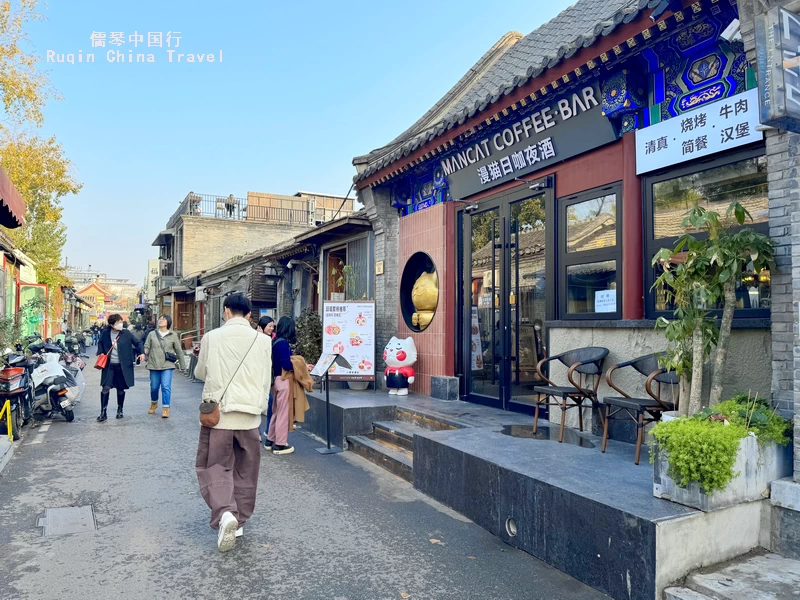
Furthermore, Wudaoying Hutong offers a relaxed ambiance, making it perfect for a leisurely stroll. It’s also close to the Lama Temple, so you can easily combine both visits.
4. Guozijian Street
Guozijian Street, also known as the Confucius Temple and Imperial College Street, is a historic hutong near the Lama Temple. This hutong is quieter and more serene, with ancient buildings and traditional shops.
Here, you can visit the Confucius Temple and the Imperial College, which offer insights into Chinese education and culture. Additionally, the street is lined with old trees, adding to its peaceful charm.
5. Dongjiaomingxiang
Dongjiaomingxiang is known for its historical significance. The Former Legation Quarter, also known as the Dong Jiao Min Xiang Diplomatic Compound, is a historic area. It is located along the same name “Dong Jiao Min Xiang ” Hutong in the Dongcheng District of Beijing, China. This hutong is recognized by Google map as “East Dongjiaomin Lane, or E Minjiao Ln“.
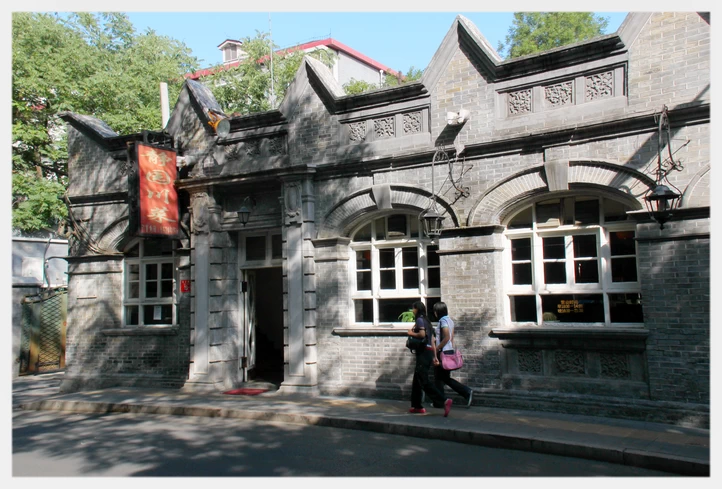
Visitors can find several museums and historical sites here, making it a perfect spot for history enthusiasts. Visiting the Former Legation Quarter in Beijing is a journey back in time to the diplomatic history of the city.
6. Caochang Hutongs
Caochang Hutongs (草厂) stand out as a hidden gem, offering a glimpse of authentic old Beijing life. These well-preserved alleys are located near Qianmen and remain largely untouched by commercialization.
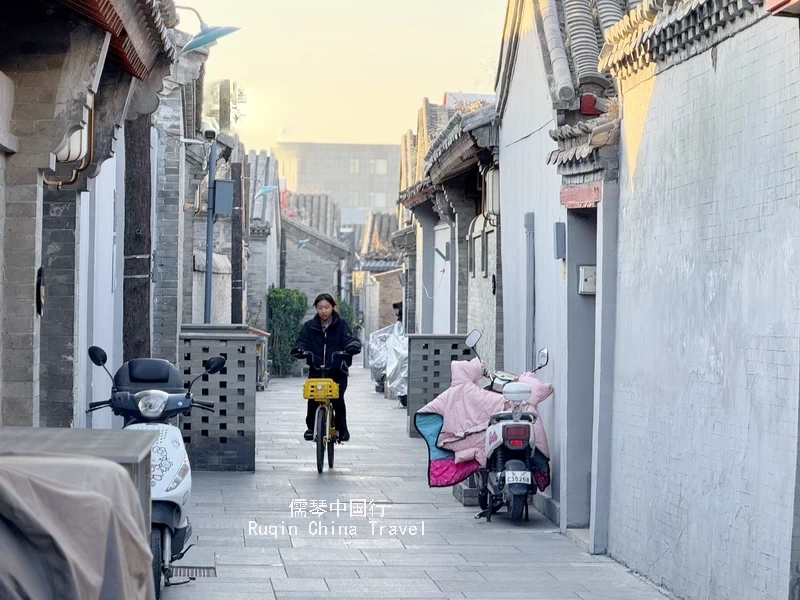
The Caochang Hutongs are located in the heart of Beijing, near the bustling Qianmen area. Unlike the more famous and heavily commercialized hutongs such as Nanluoguxiang, Caochang Hutongs provide a more serene and authentic experience.
How to Explore Hutongs
Walking Tours
Walking is the best way to explore hutongs. You can take guided tours that provide historical context and interesting stories about the areas you visit. Additionally, many tours offer visits to local homes, where you can see traditional courtyards and interact with residents. Check out: Beijing Hutong Walking Tours.
Rickshaw Rides
Rickshaw rides are a popular way to see the hutongs. They offer a comfortable and leisurely way to navigate the narrow lanes. Rickshaw drivers often act as guides, sharing anecdotes and historical facts during the ride.
Cycling
Renting a bicycle is another great option. Cycling allows you to cover more ground quickly and is ideal for those who enjoy a bit of exercise. Several rental shops around the hutongs offer bicycles at reasonable rates.
Tips for Visiting Hutongs
Best Time to Visit
The best time to visit hutongs is during the spring and autumn months. The weather is pleasant, and you can enjoy walking or cycling comfortably. Additionally, mornings and late afternoons are the best times of the day to visit, as they are less crowded and the light is perfect for photography.
Respect Local Residents
Hutongs are not just tourist attractions; they are home to many locals. Respect their privacy and avoid entering private properties without permission. Always ask before taking photographs of people or their homes.
Stay Hydrated and Wear Comfortable Shoes
Exploring hutongs involves a lot of walking. Wear comfortable shoes and carry a water bottle to stay hydrated. Some areas might not have many shops, so it’s best to come prepared.
Learn a Few Chinese Phrases
Learning basic Chinese phrases can enhance your experience. Simple greetings and polite expressions can go a long way in interacting with locals and making your visit more enjoyable.
Hutongs are a must-see for anyone visiting Beijing. They offer a unique glimpse into the city’s history, culture, and daily life. Whether you choose to explore on foot, by rickshaw, or by bicycle, hutongs will provide an unforgettable experience.
From the bustling Nanluoguxiang to the serene Guozijian Street, each hutong has its own charm and story to tell. Plan your visit to these historic alleys and immerse yourself in the rich cultural tapestry of Beijing.
More Beijing Travel Guides
Planning your Beijing tour? Our “Beijing Travel Guide“ section offers essential advice to help you navigate the city like a pro. From transportation tips and local customs to insider recommendations for hidden gems, these travel tips will ensure you have a smooth, enjoyable, and unforgettable experience in China’s vibrant capital. Let us guide you through the best practices for exploring Beijing with confidence!


